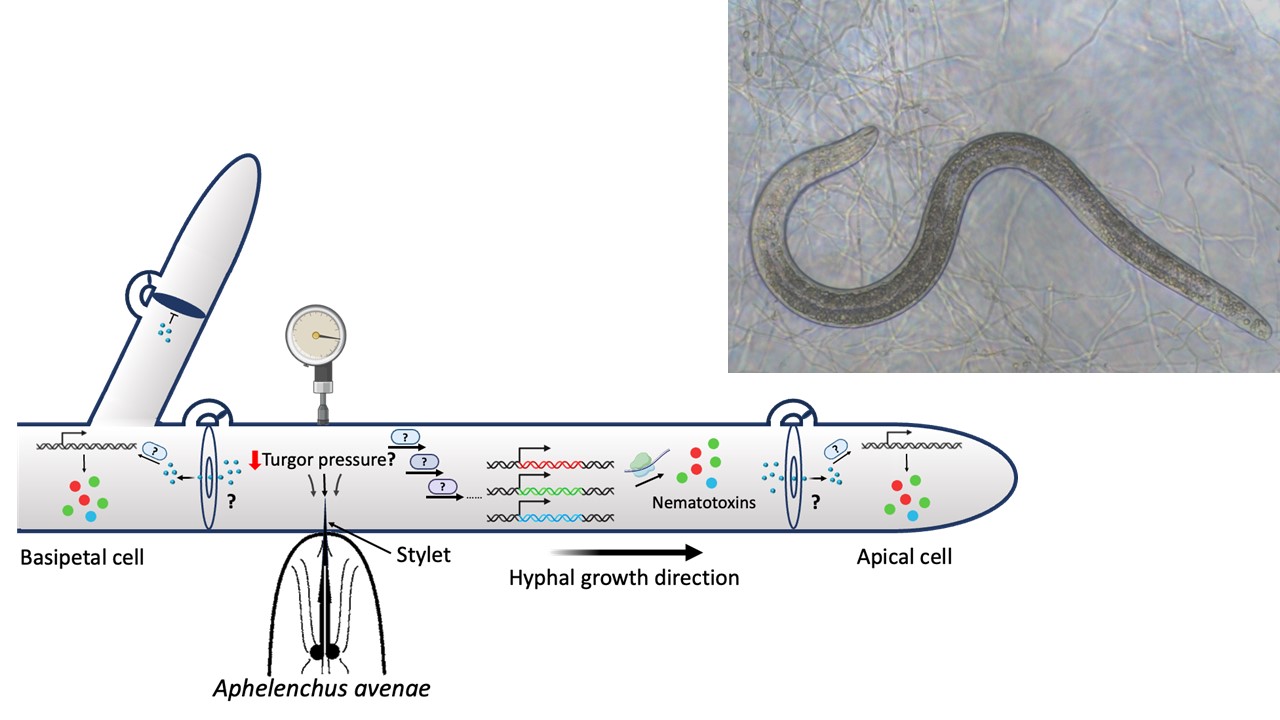Project 1: Fungal defense against nematodes
The model mushroom Coprinopsis cinerea possesses both constitutive and induced layers of chemical defense against the fungivorous nematode Aphelenchus avenae. This micropredator uses a stylet to pierce the fungal cell wall and feed on the hyphal cytoplasm.
We have previously shown that the molecular signal inducing the fungal antinematode defense propagates both apically and basipetally along specialized hyphae (i.e. trunk hyphae) starting from the site of predation. However, the cellular and molecular mechanisms underlying the induction and propagation of this defense response within the vegetative mycelium are unknown.
We hypothesize that:
1) The initial signal for induction is a sudden drop in cellular turgor pressure caused by stylet-mediated feeding.
2) This drop in turgor pressure leads to the induction of nematotoxin encoding genes in all hyphae and the generation of a secondary, soluble signal in trunk hyphae.
3) This soluble signal e.g. small RNAs, is then propagated in trunk hyphae via cytoplasmic bulk flow and leads to induction of nematotoxins in remote compartments of these hyphae.
We address these hypotheses by combining diverse techniques, including microfluidic devices, fluorescence microscopy, and spatiotemporal omics-analysis. Our results will deepen the current understanding of antinematode defense and innate defense in basidiomycetes and other fungal phyla.

